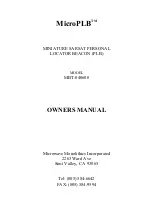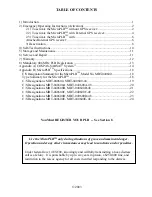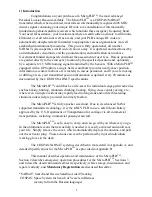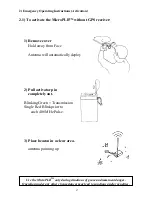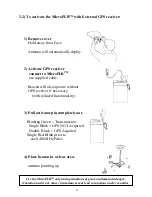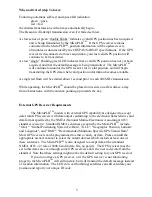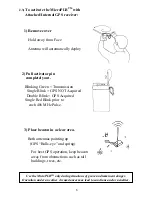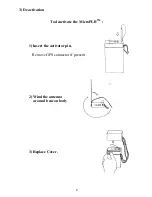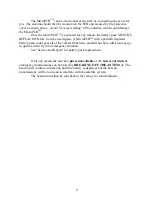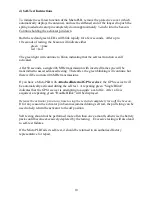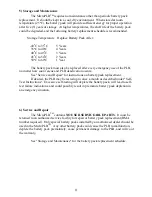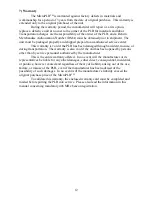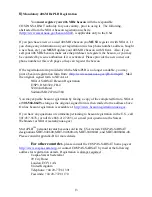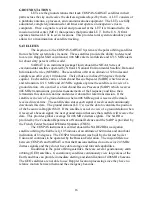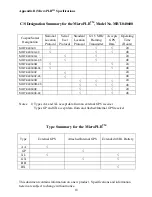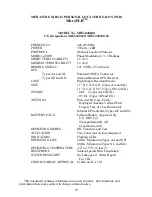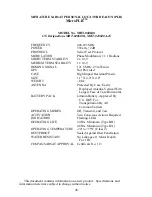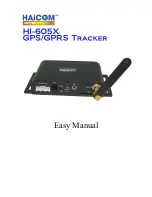
5
When activated (step 3 above):
Following automatic self-test and a pass/fail indication
green = pass,
red = fail
the distress transmissions will always automatically begin.
The Beacon will attempt transmission even if it failed self-test.
A slow series of green “double blinks” indicates a valid GPS position has been acquired
and is being transmitted by the MicroPLB
TM
. If the GPS receiver remains
connected to the MicroPLB
TM
, position information will be updated every
20 minutes as documented by the COSPAS/SARSAT specifications. If the GPS
receiver is disconnected or loses acquisition, your last valid GPS position will
continue to be transmitted.
A slow “single” blinking green LED indicates that a valid GPS position has not yet been
acquired, and that the default message is being transmitted. The MicroPLB
TM
will continue to monitor the GPS receiver for a valid position, and will begin
transmitting the GPS data when valid position information becomes available.
A single red flash will be emitted about 1 second prior to each 406 MHz transmission.
While operating, the MicroPLB
TM
should be placed on its side on a flat surface, away
from obstructions, with the antenna pointing up towards the sky.
External GPS Receiver Requirements
The MicroPLB
TM
models with external GPS capability are designed to accept
data from GPS receivers with data output conforming to the electrical characteristics and
data format specified by the NMEA (National Marine Electronics Association) 0183
standard, version 2. Standard NMEA sentences accepted by the MicroPLB
TM
include
"GGA": "Global Positioning System Fix Data", "GLL": "Geographic Position, Latitude
and Longitude", and "RMC": "Recommended Minimum Specific GPS/Transit Data".
Most GPS receivers can be programmed to emit a variety of data. Please consult the
appropriate owner's manual to select the output data set which include at least one of
these sentences. The MicroPLB
TM
is also designed to accept data at the (standard
NMEA 0183 v.2) rate of 4800 baud (8 data bits, no parity). The GPS receiver must be
set to this data rate even though some GPS receivers allow the user to deviate from the
standard. Note that these settings might not be the default setting for your GPS receiver.
If you do not have a GPS receiver, or if the GPS receiver is not functioning
properly, the MicroPLB
TM
will still operate, but will transmit the default message instead
of location information. The LEO (low earth orbiting) satellites can still calculate your
position and report your unique ID code.

